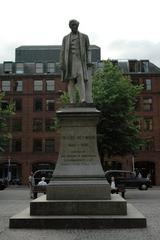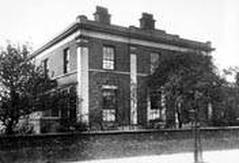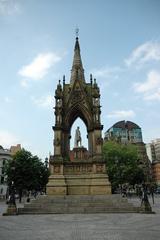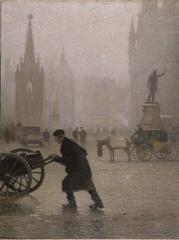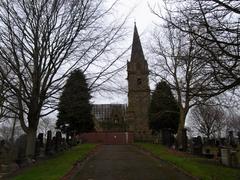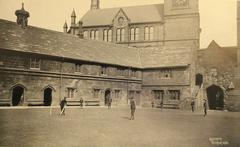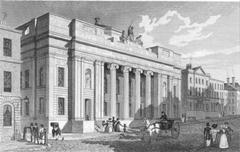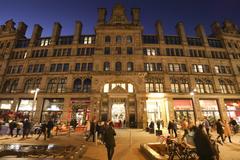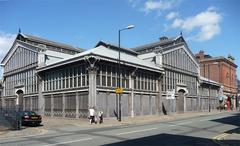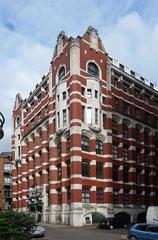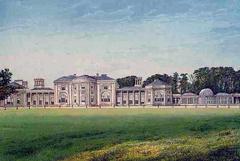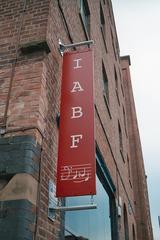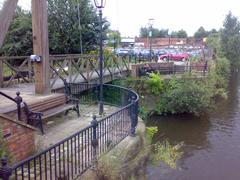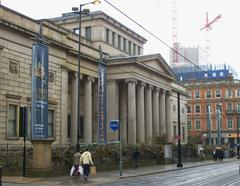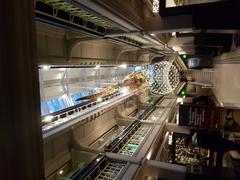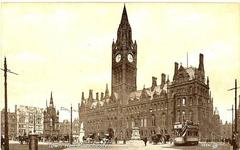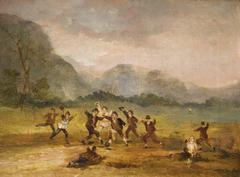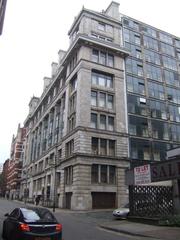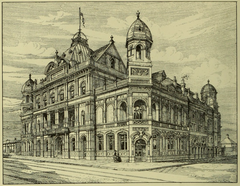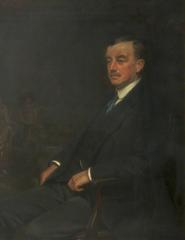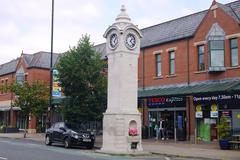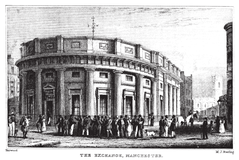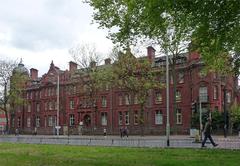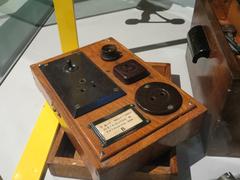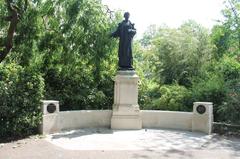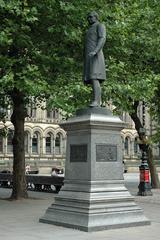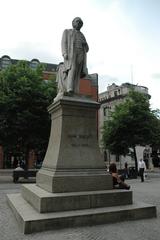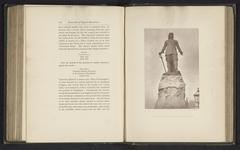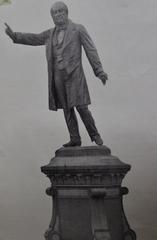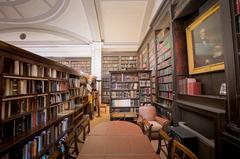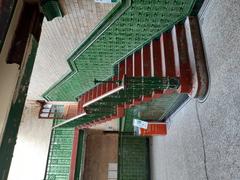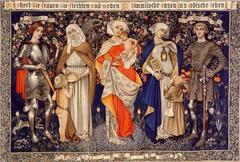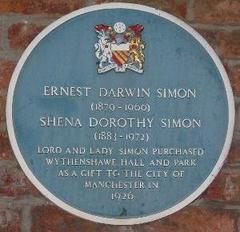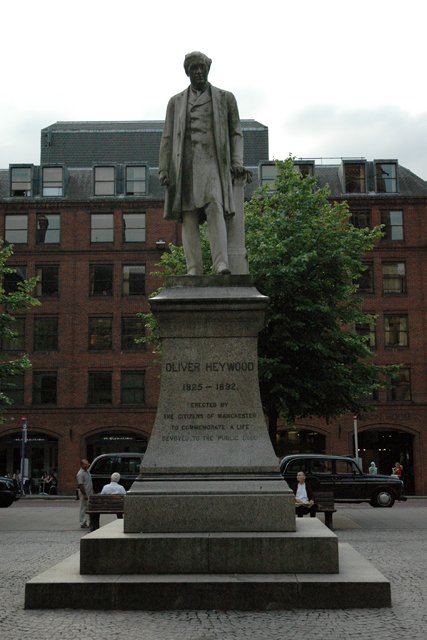
Statue of Oliver Heywood Manchester: Visiting Hours, Tickets, and Historical Significance
Date: 14/06/2025
Introduction
The Statue of Oliver Heywood, located in Manchester’s Albert Square, is a prominent monument honoring the city’s renowned Victorian-era philanthropist and banker. Erected in 1894 and sculpted by Albert Bruce-Joy, the statue embodies Heywood’s enduring legacy in education, social welfare, and civic reform. This guide offers a comprehensive overview of the statue’s historical context, artistic significance, and practical visiting information, as well as insights into nearby attractions and visitor resources.
For the latest visitor updates and further information, consult official resources such as Visit Manchester and the Manchester City Council.
Historical Background: The Legacy of Oliver Heywood
Oliver Heywood (1825–1892) was a pivotal figure in Manchester’s civic and philanthropic life. As a partner in Heywood’s Bank, he used his wealth to support education, healthcare, and charitable institutions. His contributions helped establish Owens College (which became the University of Manchester), Manchester Grammar School, and local hospitals (NatWest Heritage). Heywood’s activism extended to abolitionist causes and workers’ education, reflecting a broad commitment to social reform (Confidentials).
The Heywood family’s fortunes, like many merchant families of the era, were initially linked to 18th-century mercantile activity, including the transatlantic slave trade (Revealing Histories). However, by Oliver’s time, the family was noted for its support of abolition and progressive social causes.
Heywood’s philanthropic impact was widely recognized: he was Manchester’s first Honorary Freeman and was commemorated by public subscription with this statue in Albert Square (Historic England).
Artistic Design and Symbolism
Sculpted by Albert Bruce-Joy, the statue is cast in bronze and mounted on a granite plinth. Heywood is depicted standing in Victorian attire, holding a scroll that symbolizes his dedication to education and public service. The lifelike detail in his features and clothing reflects Bruce-Joy’s skill in realistic portraiture, influenced by the New Sculpture movement (Victorian Web).
Inscriptions on the plinth detail Heywood’s civic and philanthropic achievements. The use of bronze and granite conveys permanence and respect, aligning with Victorian ideals of public service. The statue’s dignified posture invites contemplation of Heywood’s values and legacy.
Cultural Significance and Context
The statue stands prominently in Albert Square, surrounded by other notable monuments and the iconic Manchester Town Hall. Its location situates Heywood among the city’s leading reformers and reflects Manchester’s tradition of civic pride (Manchester City Council). The monument is regularly included in historical walking tours and is a touchstone for discussions about Manchester’s identity as a center of industrial innovation and social progress.
Visiting the Oliver Heywood Statue: Practical Information
Location
- Albert Square, Manchester city center, adjacent to Manchester Town Hall.
Visiting Hours
- Open 24/7: Albert Square is a public space accessible at all times. Daylight hours are recommended for optimal viewing and photography.
Tickets
- No tickets or admission fees are required; the statue is free to visit.
Accessibility
- Wheelchair accessible: Level, paved pathways and nearby accessible public transport options (Accessible Manchester).
- Public seating and restrooms available nearby.
Travel Tips
- By Tram: St Peter’s Square Metrolink stop is a short walk away.
- By Train: Manchester Piccadilly and Victoria stations are within a 20-minute walk.
- By Bus: Multiple routes serve Albert Square.
- By Car: City center parking is available, though limited during peak times (Transport for Greater Manchester).
Guided Tours and Special Events
Local tour operators and guides often feature the Oliver Heywood statue in walking tours, offering context on Manchester’s history of liberalism, social reform, and public art (Superlative Walks). Albert Square also hosts civic events, festivals, and markets—providing a dynamic backdrop for your visit.
For current schedules and bookings, check the Manchester Visitor Information Centre.
Nearby Attractions
Enhance your visit by exploring these nearby sites:
- Manchester Town Hall: A Victorian Gothic masterpiece.
- John Rylands Library: Renowned for its neo-Gothic architecture and rare collections.
- Manchester Central Library: Offers exhibitions and archives.
- Royal Exchange Theatre: A historic venue for contemporary performances.
- John Bright Statue: Another key reformer commemorated in Albert Square.
These landmarks, all within walking distance, create a rich itinerary for cultural exploration.
Visual Highlights and Accessibility
- Photograph the statue with Manchester Town Hall as a backdrop for iconic images.
- Use alt text such as “Oliver Heywood statue in Albert Square Manchester” for image accessibility.
- Virtual tours and high-resolution images are available on official tourism websites.
- QR codes near the statue may link to digital resources and interpretive content (Visit Manchester).
Conservation and Heritage Status
The statue is a Grade II listed monument, ensuring its preservation and regular conservation as part of Manchester’s heritage (Historic England). Conservation efforts include routine cleaning and protective treatments, coordinated by the city council and heritage organizations.
Frequently Asked Questions (FAQ)
Q: Where is the Oliver Heywood statue located?
A: In Albert Square, Manchester city center.
Q: Is there an admission fee or ticket required?
A: No, the statue is free and publicly accessible at all times.
Q: What are the visiting hours?
A: Albert Square is open 24/7; daylight visits are recommended.
Q: Is the site accessible for people with disabilities?
A: Yes, with paved, wheelchair-accessible paths and seating.
Q: Are guided tours available?
A: Yes, many local walking tours feature the statue.
Q: What other historical sites are nearby?
A: Manchester Town Hall, John Rylands Library, Central Library, and Royal Exchange Theatre.
Cultural Insights and Responsible Tourism
- Treat the statue and surrounding area with respect; climbing on the monument is prohibited.
- Albert Square is a hub of public life, hosting events and gatherings that reflect Manchester’s civic spirit.
- Support sustainable tourism by using public transport and supporting local businesses (Visit Manchester Well).
Conclusion and Recommendations
The Statue of Oliver Heywood is a vital piece of Manchester’s urban heritage, offering insight into the city’s philanthropic traditions and civic values. Its central location, free access, and proximity to major attractions make it an essential stop for visitors. Take advantage of guided tours, explore nearby landmarks, and reflect on Manchester’s evolving history of reform and social progress.
For up-to-date information, event details, and curated tours, use resources like Visit Manchester and the Manchester Visitor Information Centre. To enrich your journey, download the Audiala app for audio tours and exclusive content.
Sources and Further Information
- Revealing Histories
- Visit Manchester
- Historic England
- Manchester City Council
- Transport for Greater Manchester
- Accessible Manchester
- Manchester Visitor Information Centre
- Wikipedia
- Speel
- NatWest Heritage
- Victorian Web
- Confidentials
- Manchester’s Finest
- Superlative Walks
